Add Supports
1.0 Introduction
This tutorial will demonstrate how a support pattern can be added to a specific area of the model. Support patterns can be defined using two different menu options: 1) Add Support, and 2) Add Support to Surface. (Note that these options exclude geosynthetics which are added using their own options in the support menu.) This tutorial will provide step-by-step instructions for adding a support pattern using the Add Support option.
2.0 Results Without Supports
- Select File > Recent > Tutorials and read in the file Add Support – starting file from the installation folder.
- Select Analysis > Compute or select Compute
 icon in the toolbar.
icon in the toolbar. - Go to the Results tab

You should see the following results. The Bishop safety factor is about 1.3.
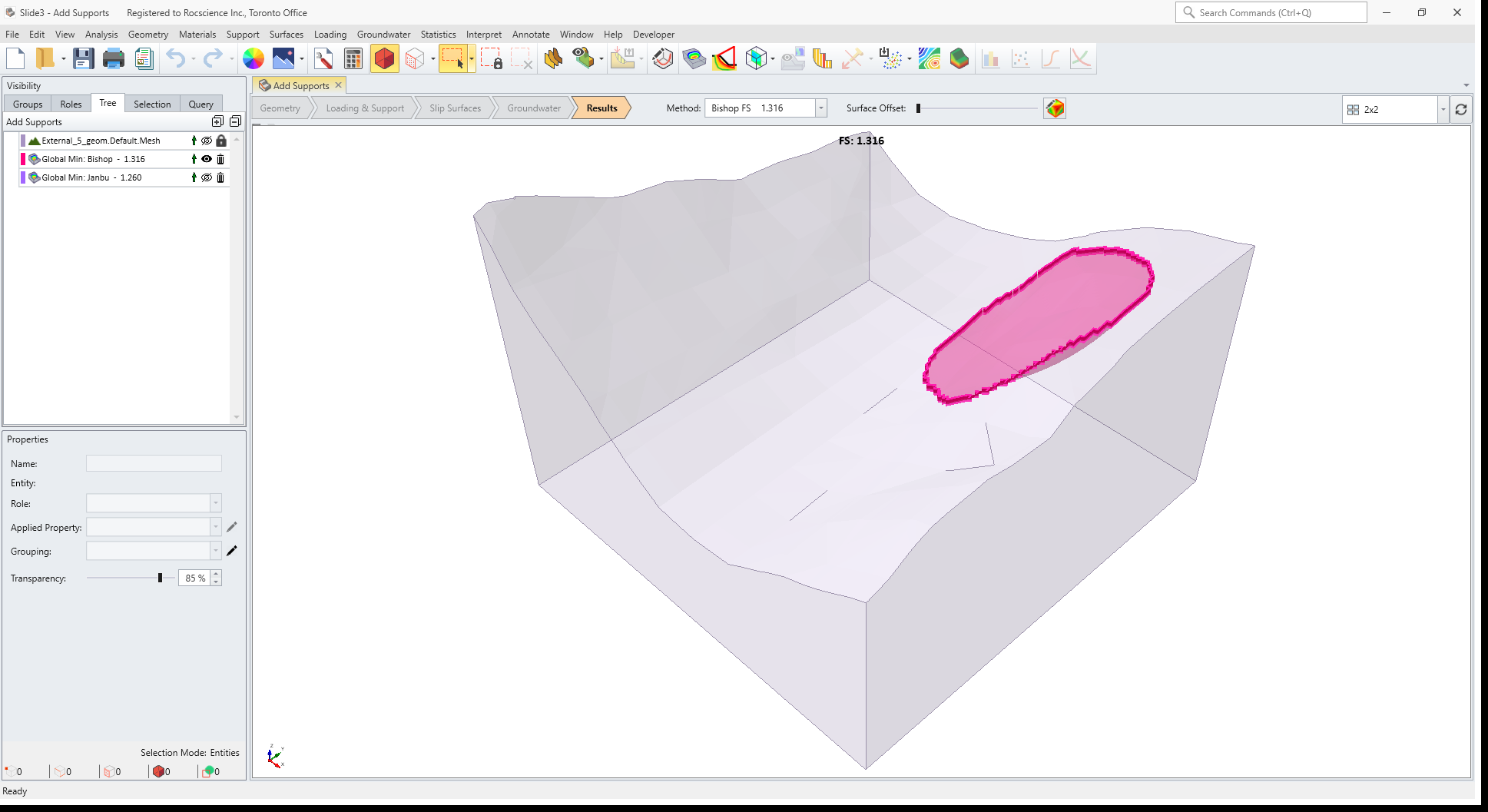
3.0 Add Supports
- To add supports to the model, select Supports > Add Support

- Begin by defining the Support Shape under the Shape tab in the Add Support Pattern dialog as following:
- Select Shape = Rectangle
- Enter Width (m) = 27
- Enter Height (m) = 27
- Leave the Basepoint as default.
- Next, select the Properties tab and enter the following parameters:
- Bolt Length (m) = 7
- Horizontal Spacing (m) = 1
- Vertical Spacing (m) = 1
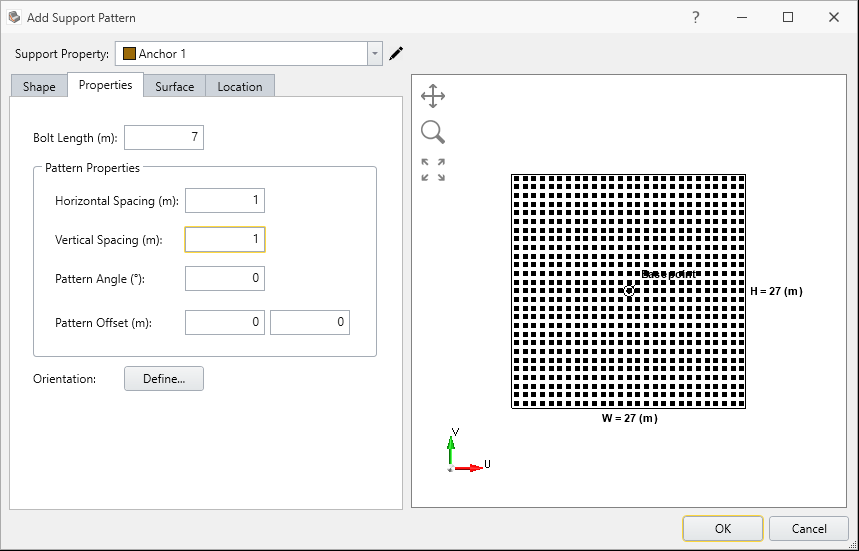
- Click on Define in front of Orientation. In the Define Orientation dialog, enter the following parameters:
- Select Defined By = Trend/Plunge
- Trend = 45
- Plunge = 45
- Finally, select the Location tab. Notice that the load can be placed on the model using either Freehand Manipulation or by entering X, Y coordinates. Enter (-77, -6.5) for the (X, Y) coordinates. This will place the support on the model, with the basepoint (defined in the Shape tab) at the coordinates entered. The support will now appear on the model.
- Select OK to finalize the placement of the support.
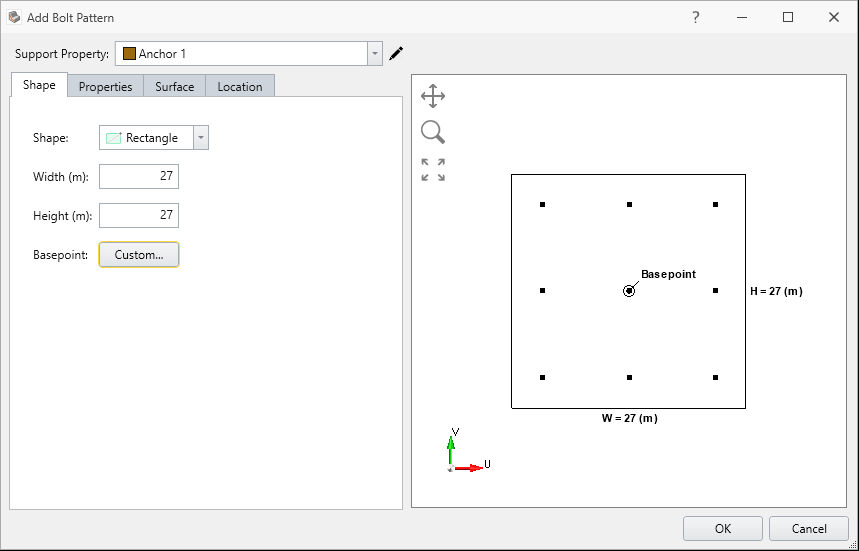
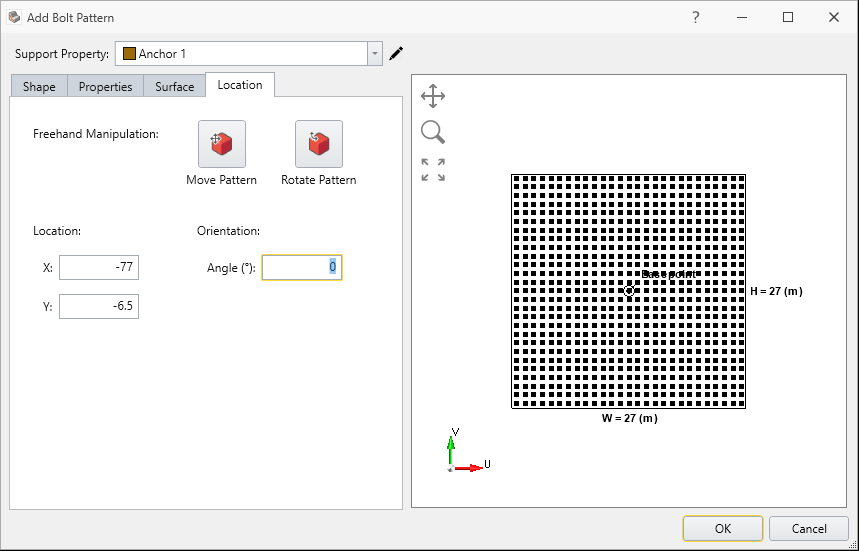
The final model with the support pattern added should now appear.
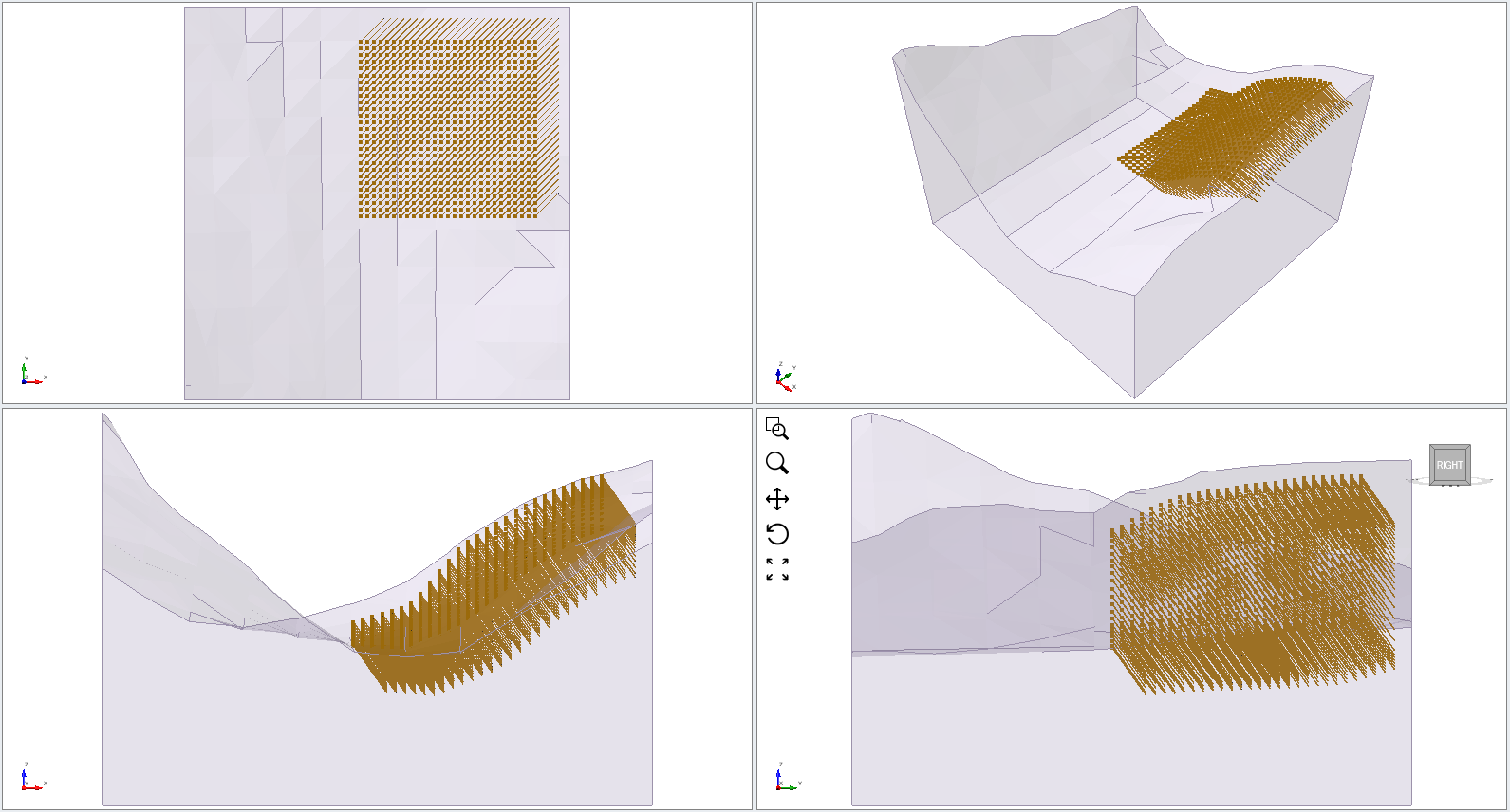
4.0 Results
- Save the file and click Compute

You should see the following results. The Bishop safety factor is about 1.5. You can see the failure surface be outside the reinforced area.
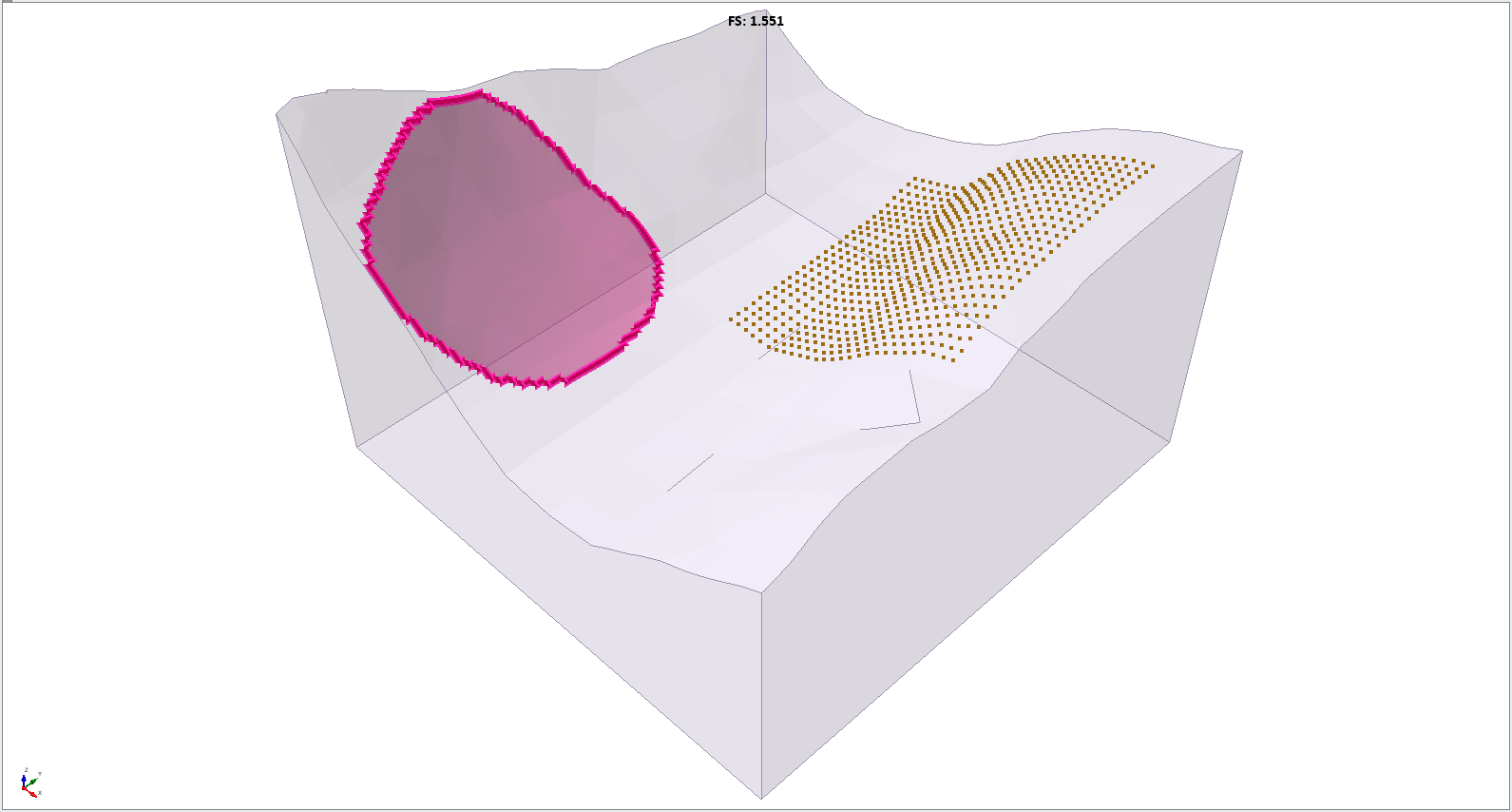
4.1 Add Surface Safety Map
- Select Interpret > Add Surface Safety Map

By selecting this feature, you can see the safety map of the computed model.
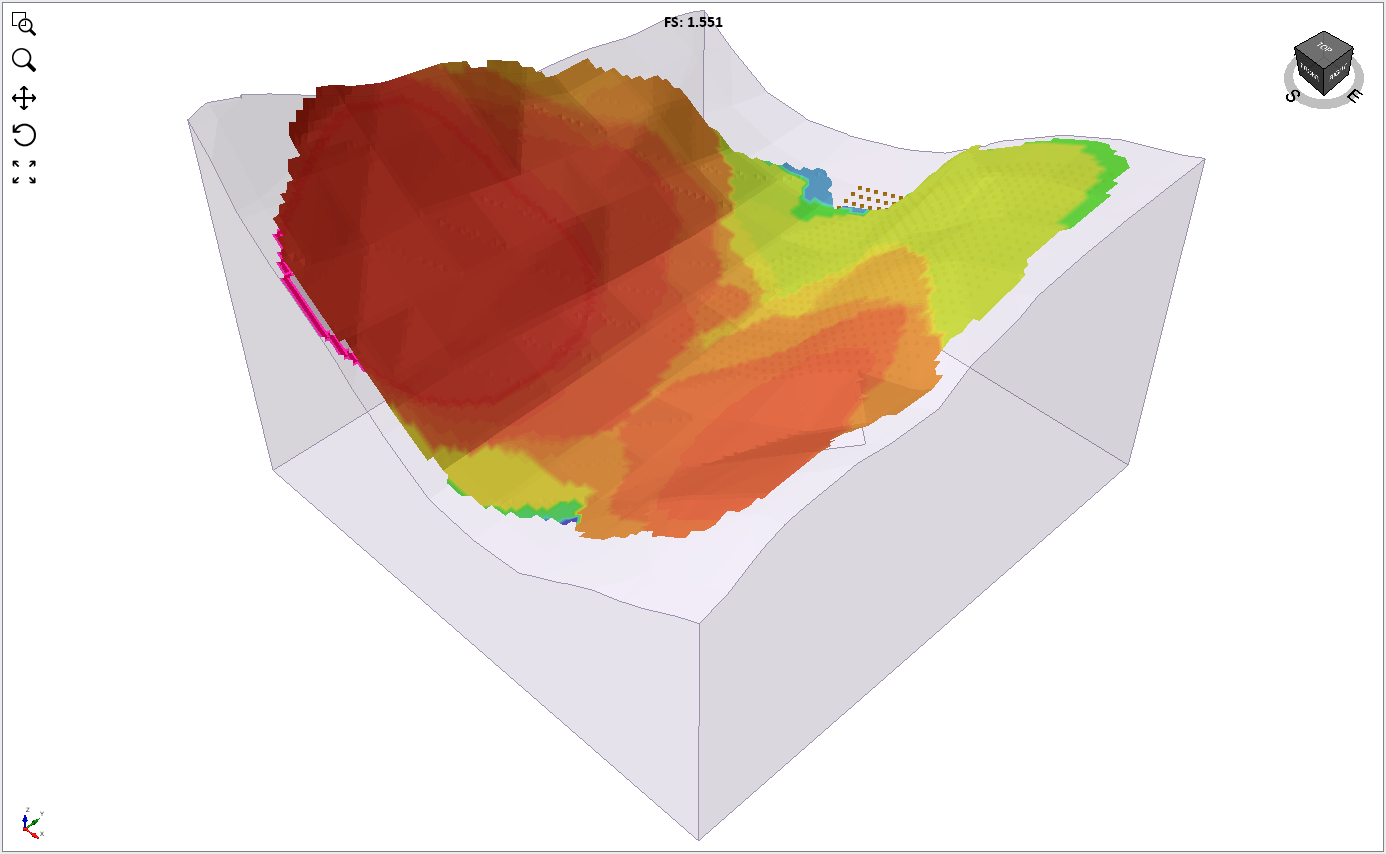
This concludes the 12 - Add Supports tutorial.